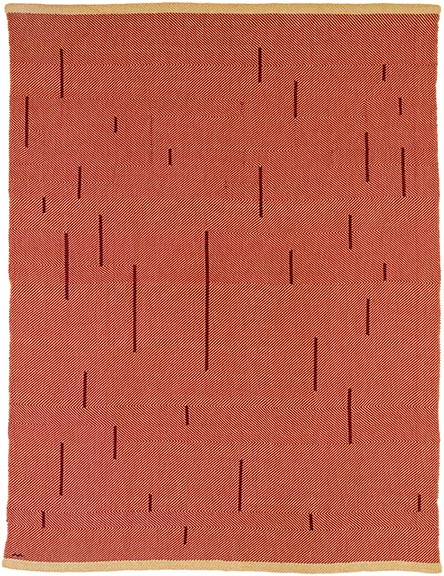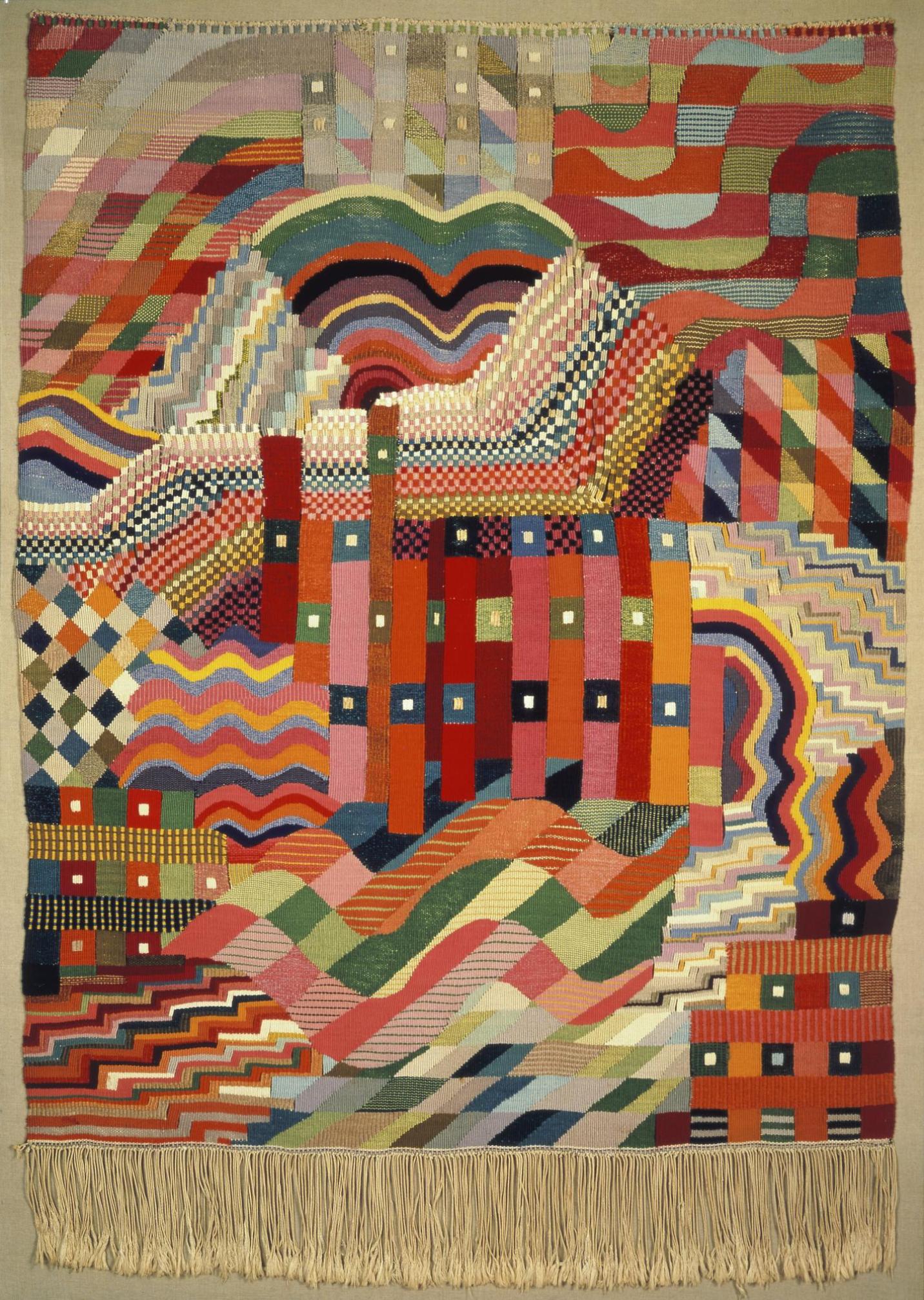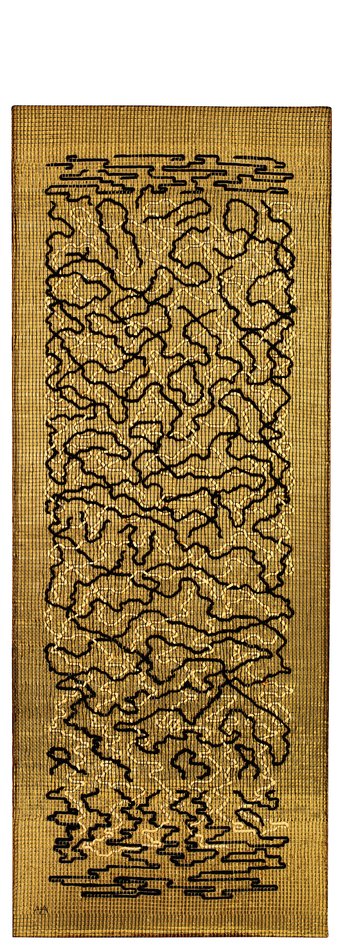Anni Albers at the Tate Modern
Applied to the Bauhaus in 1922. At this time, students would do a 6 week Vorkurs, then apply to the school. Didn't get in but met Josef Albers, eventually applied again and got in. In the first year (23), she was placed into the weaving programme (which started out as the "women's department") (because sexism).
Anni Later referred to the act of weaving as The Event of the thread.
She of course went on to become one of the most important textile artists of the 20th century. Economy of technique an material (following bauhaus ideas)
Master of craft (a weaver, woodworker) and master of form (always a painter) Georg Muche master of form in weaving
[Study for a table cloth, 1930]
Weaving (with horizontal and vertical weft and something) lends itself to straight lines, modernist forms. ALbers contribution was to elevate weaving to the level if other arts - she did this to pictoral weaving: The thing exists as a finished object (you're not cutting it up a fabric)
Albers always shows the horizontal and vertical - she never really does anything you as a view can't figure out.
[weaving diagram] different binary patterns (over under) lead to different 2d patterns
[1925 design for a wall hanging]
muche at some point decided to buy jaquard looms (without telling anyone) ALbers (and others) used this to go beyond straight lines.
[wall hanging 1925] we see how albers still uses traight lines on cotrast
Some words on Josef Albers
Born in Bottrop, joined the Bauhaus in 1922, quickly started teaching, ran the Vorkurs started doing stained glass stuff from found objects
[fabrik, 1925]
Two layers of glass, one tinted red, some of the red is sandblasted away, then enammel on top
the bauhaus didn't have any of the tools for this, so most likely albers hada a litera factory execute this. Ww clearly see the parallels between his and annis weaving drafts (i.e he ripped her off).
Hannes Meyer becomes director in 1928, Bernau trade union school
The auditorium of this needed wall hangings to dampen the sound. ALbers came up with a material that had cotton on the back to dampen the sound, silvery cellophane on the front. Again economy of materials
The nazis shut down the bauhaus in 1933.
Albers's in new york (1933)
Black mountain college (38-55)
The Albers basically formed the art department, Joseph doing esentially the Bauhaus Vorkurs Anni doing weaving.
Anni started teaching weaving without a loom, through techniques like these:
- Typewriter studies (using repeated letters that read like a textile)
- Also puncturing card to create fabric-type texture
- Pieces of corn (repeated patterns)
In "on weaving" (1965) Anni talks about how every material has three propoerties:
- Strucure (how it ws formed)
- Texture (what its superficial surface feels like)
- Facture (what's done to it, twisting etc)
Our materials come to us alreadt ground and chipped and crushed...
(on weaving)
The albers start to go to mexico, where anni learns to backstrap weave. Also starts to use found materials
[la luz 1934]
Probably the masterpiece:
 With Verticals (1946) Tate
With Verticals (1946) Tate
Here she's moved beyond the horizontal and vertical, this is so complex we can't understand what goes on
Anni has the first solo show for a weaver at MoMA In 1950 Josef becomes the chair of the design department at yale Anni doesn't teach, but from 50-65 she makes the majority of her woodworker
[open letter 1958] Exploring the smilarity between textile and text (see also lines)
Enmeshed (1963)
Again taking the event of thread into print She came back for a residence, did line involvement (1964)
Eventually screen prints: GR 1 (1970)
Drawings in the 1980s use her shaky hand
Workshop
Joseph albers paper studies (catier bresson photograph)
wire manipulation study (1925 This exploits the memory of metal wire
Clay and wire screen come together
All of this about showing what these materials can and cant do When the albers came to black mountain, it was the middle of the depression, hence no materials could be bought.
[Matiere by Ray Johnson 1948]
At the bauhaus, these material studies are all pretty architectural - at bm, they become much more abstract and poetic.

